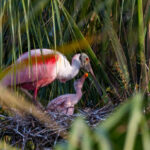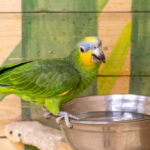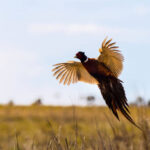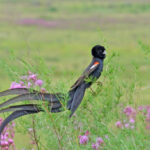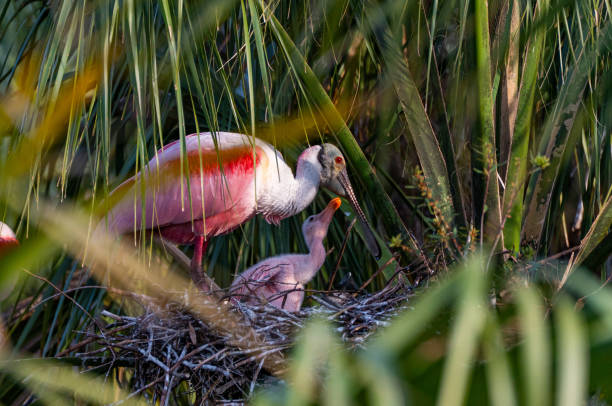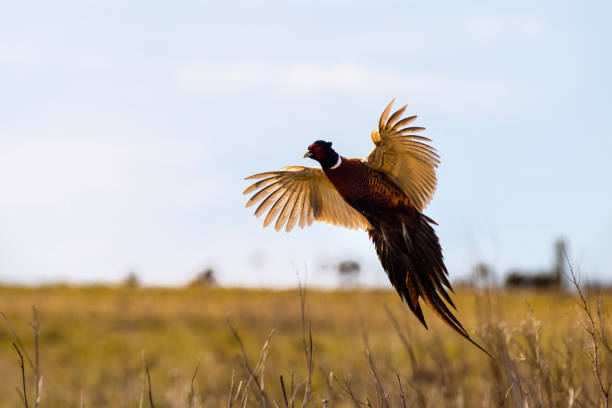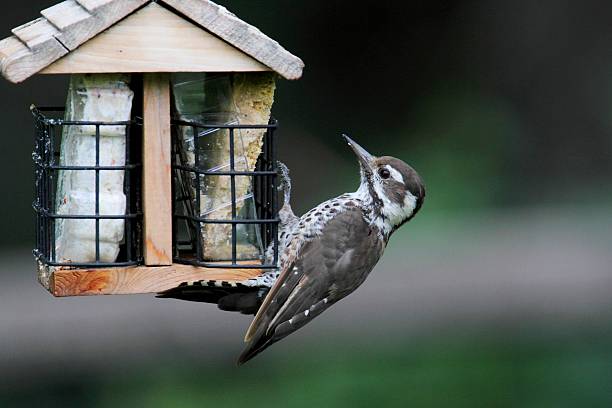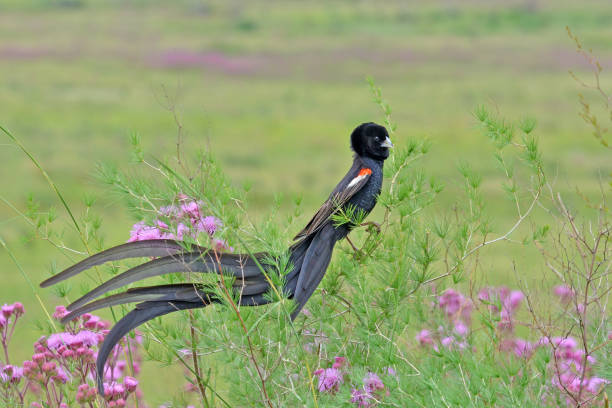Have you ever seen a picture of a parrot with feathers so bright they look painted, or a tiny finch sparkling like a jewel? If you have, you’re not alone! Many people dream of bringing a burst of color and a touch of the wild into their homes. Exotic birds are truly fascinating creatures, and some species are simply breathtaking to look at. Colorful feathers, fun personalities, and surprising skills can bring joy and beauty to any home. Imagine waking up to the gentle chirps and seeing a living piece of art in your living room!
But hold on a second! Before you fall in love with a beautiful parrot or a bright finch, remember that owning an exotic bird is a big responsibility. These aren’t just pretty decorations that you put in a cage and forget about. Oh no! They are intelligent, sensitive, and often live for a very long time. They have very specific needs that must be met to keep them happy and healthy. Picking the right bird is about more than looks. You need one that suits your lifestyle and living situation, whether you’re in a busy city or a calm place like Vehari, Punjab, Pakistan. Also, consider how much time you can commit to their care.
In this friendly and complete guide, we’re going to explore some of the most beautiful exotic birds you can potentially own. Let’s explore what makes them special and colorful. Then, we’ll discuss key points to consider before welcoming one of these amazing feathered friends into your home. Our goal is to make sure that both you and your beautiful bird can enjoy a happy, healthy, and long life together. So, let’s learn all about these amazing creatures!
What Makes an Exotic Bird So “Beautiful”? It’s More Than Just Colors!
When we talk about a “beautiful” exotic bird, what exactly do we mean? Of course, beauty is different for everyone, but when we talk about these amazing birds, we often think of:
- Bright Colors: Birds show off amazing mixes of vivid colors, like electric blue, fiery red, sunny yellow, and deep green. Sometimes their feathers look like they’re shimmering!
- Special Patterns: They may show delicate feather patterns, cool stripes, or unique spots. These details are mesmerizing up close.
- Elegant Shape: Birds with graceful body shapes, long, flowing tails, or special crests (feathers on their heads) that move with their mood.
- Lively Eyes and Beaks: Their eyes often look very intelligent and expressive, and their beaks can be colorful and add to their overall charm.
But here’s a secret: beyond just their looks, a truly beautiful bird is also a healthy, happy bird. When a bird is well cared for and happy, its feathers will be smooth, bright, and perfectly arranged. Its eyes will be clear and alert, and its behavior will be lively and engaging. A dull, ruffled bird, even of a naturally colourful species, isn’t truly beautiful. So, health and happiness are key to their real beauty!
Top Most Beautiful Exotic Birds You Can Own: A Living Art Gallery!
Here are some of the most visually stunning exotic birds that people often keep as pets. We’ll talk about what makes them so beautiful and then, very importantly, what you need to think about before owning one.
1. Macaws (The Giant Rainbows of the Bird World)
- Why they’re beautiful: Macaws are probably the most famous “beautiful exotic birds” out there. They are huge, powerful, and come in an astonishing array of colors.
- The Blue and Gold Macaw is famous for its dazzling blue back and bright golden-yellow chest.
- The Scarlet Macaw is a true showstopper with its incredible mix of vivid red, bright yellow, and deep blue feathers. It’s like someone painted a rainbow directly onto its body!
- The Greenwing Macaw has a rich red body with striking bands of green and blue on its wings. Their large size, very strong beaks, and long, elegant tails make them look truly majestic and impressive.
- What makes them special: Beyond their stunning looks, Macaws are incredibly intelligent. They can learn to talk (sometimes quite well!) and can be trained to do many tricks. They also form very deep, loving bonds with their owners, often acting like a big, playful puppy.
- Things to think about before getting one:
- Huge Size & Space Needed: Macaws are very, very large birds. They need incredibly huge cages – much bigger than most people realize – and a lot of open space in your home to stretch their wings, climb, and play. This means they are definitely not suitable for small homes or apartments, whether you live in Vehari or a big city like Lahore.
- Extremely Loud Noise: Macaws are famous for being extremely loud. Their natural calls are powerful and can be heard from a long distance. This can be a major problem for neighbors, especially if you live in a crowded area.
- Very Long Lifespan: These birds can live for a very, very long time – often 60 to 100 years or even more! This is a commitment that can last for several generations of your family. You need to have a serious plan for who will care for your Macaw if something happens to you. It’s truly a lifelong (or even longer!) responsibility.
2. Rainbow Lorikeets (Living Masterpieces of Color)
- Why they’re beautiful: Just as their name suggests, Rainbow Lorikeets are like having a living rainbow fly around your home. They have a bright blue head, green wings, and a fiery orange-red chest. Their feathers also show splashes of yellow, purple, and blue. Their colors are incredibly vibrant and almost seem to glow.
- What makes them special: These birds are energetic, very playful, and can be quite affectionate. Lorikeets are known for their lively personalities and are often very entertaining to watch. They also have a unique “brush-tipped” tongue, which is specially made for eating nectar and pollen.
- Things to think about before getting one:
- Special Diet: This is very important! Lorikeets are different from most parrots. While many parrots eat seeds and pellets, Lorikeets mainly consume nectar and special lorikeet food. This food is often a powder mixed with water. They also enjoy plenty of fresh fruits and vegetables. This liquid diet means their droppings are also very liquid and can be quite messy.
- Very Active & Social: They are extremely active birds and need a large cage with plenty of toys, branches for climbing, and swings. They also need a lot of social interaction with you to stay happy and well-adjusted.
- Lifespan: They usually live for 10 to 30 years.
3. Eclectic Parrots (Beauty Where Males and Females Are Different)
- Why they’re beautiful: Eclectic Parrots are unique. Males and females have very different colors, but both are equally stunning.
- Males are a vibrant emerald green, almost glowing, with a bright orange beak and hints of blue and red under their wings.
- Females are a striking deep red, with brilliant purple or blue on their chests and a black beak. The color differences between male and female birds, known as “sexual dimorphism,” fascinate bird lovers.
- What makes them special: Eclectus are known for being calm, gentle, and quiet. This makes them great indoor pets, especially compared to other parrots. They are also intelligent and can learn to talk.
- Things to think about before getting one:
- Very Specific Diet: They have a very particular diet. They need a lot of fresh fruits, vegetables, and sprouts, and only a very small amount of seeds or pellets. Getting their diet wrong can easily lead to health problems and dull feathers.
- Sensitive Skin/Feathers: Their feathers and skin are delicate. So, it’s important to keep the right humidity at home and handle them gently.
- Quieter Nature: While intelligent, they are often less noisy than many other beautiful birds which can be a big advantage for some owners.
- Lifespan: They typically live for 30 to 50 years, or sometimes even longer.
4. Sun Conures (Little Suns of Energy and Color)
- Why they’re beautiful: Sun Conures truly live up to their name; they look like miniature suns! They are a stunning mix of blazing yellow, bright orange, and vivid green feathers. These colors blend beautifully on their bodies, making them truly eye-catching.
- What makes them special: These birds are incredibly friendly, affectionate, and full of energy. They love to cuddle and be social. Many owners say their personalities are as bright and cheerful as their colors.
- Things to think about before getting one:
- Extremely Loudness: This is a big one! Sun Conures are smaller than Macaws, but they are known for their loud, high-pitched screams. This can be a major issue for apartment living or if you have close neighbors. You really need to consider if you can handle this level of noise.
- High Energy: They are very energetic and need plenty of space in their cage to fly and play. They also need a wide variety of toys (and new toys often!) to keep their active minds busy and prevent boredom.
- High Social Needs: They thrive on human companionship. If they are ignored or don’t get enough attention, they may feel unhappy. They can become stressed or even destructive, which leads to unwanted behaviors.
- Lifespan: They generally live for 10 to 30 years.
5. Gouldian Finches (Tiny, Living Jewels)
- Why they’re beautiful: If you’re looking for breathtaking beauty in a tiny package, Gouldian Finches are simply dazzling. These small birds show off an astonishing range of colors. Their heads can be red, black, or yellow, their chests purple or white, and their bodies green, blue, or yellow. They truly look like tiny, perfectly painted masterpieces.
- What makes them special: Gouldian Finches are quiet and peaceful. They also need less care than larger parrots. They are mesmerizing to watch as they flit and flutter around their cage. However, they are generally not hand-tamed or cuddly pets; they are more for admiration and observation.
- Things to think about before getting one:
- Community Birds: They are very social birds and should always be kept in pairs or small flocks, never alone. They do best in a spacious aviary (a large bird enclosure) or a very large cage where they can fly around.
- Not for Handling: They are not the type of pet you take out to play with or cuddle. Their beauty is best appreciated by watching them interact with each other in a natural setting.
- Sensitive to Environment: They need a stable environment with consistent temperature and humidity. Sudden changes can stress them.
- Lifespan: They typically live for 5 to 9 years.
6. Cockatiels (Gentle Charmers with Expressive Crests)
- Why they’re beautiful: Cockatiels lack the bright colors of other exotic birds, but their gentle charm makes them endearing to many. Their soft grey bodies often have bright yellow crests on top of their heads. They also sport charming orange cheek patches. Their expressive crests move up and down with their moods, adding a lot to their appeal and making them seem very personable.
- What makes them special: Cockatiels are very well-known for their affectionate and gentle nature. They are also famous for their ability to whistle complex tunes and mimic sounds. They are relatively easy to tame and can make wonderful, cuddly companions, especially for first-time bird owners.
- Things to think about before getting one:
- Social & Affectionate: They thrive on human interaction and can get lonely or stressed if left alone too much without company.
- Dusty Birds: Like cockatoos, they produce a fine white powder (called “dander” or “powder down”) from their feathers. This can be an allergen for some people and requires regular cleaning.
- Whistling & Chirping: Their constant chirping and whistling can be charming, but it might be loud for some, especially in quiet homes.
- Lifespan: They generally live for 15 to 20 years, sometimes longer.
7. Lovebirds (Pocket-Sized Powerhouses of Color and Personality)
- Why they’re beautiful: Lovebirds are small, vibrant, and incredibly charming birds. Peach-faced Lovebirds show off many beautiful colors from different mutations. However, the classic one stands out. Its bright green body, soft peachy-orange face, and blue patch on its rump make it especially striking. Their bold colors and energetic, spunky personalities make them very appealing pets.
- What makes them special: Lovebirds live up to their name. They form strong bonds, whether with another lovebird or their human friend. They are active, playful, and full of personality.
- Things to think about before getting one:
- High Social Needs: They need a lot of attention and interaction. If left alone, they need a lot of human interaction. This helps avoid loneliness, stress, and problems like feather plucking or loud screaming. It’s often recommended to keep them in pairs if you cannot dedicate several hours daily.
- Can Be Noisy: Despite their small size, they can be quite noisy with their high-pitched chirps and squawks.
- Nippy Behavior: They can be a bit nippy or possessive if they are not handled and socialized regularly from a young age. Consistent training and gentle handling are important.
- Lifespan: They typically live for 10 to 15 years.
The MOST Important Things to Know Before You Own ANY Exotic Bird
Choosing a beautiful bird that catches your eye is only the very first step. Being a responsible bird owner means truly understanding the huge commitment involved. Please read these points very, very carefully before you decide to bring any exotic bird into your home. This will make sure both you and your feathered friend can have a happy and healthy life together.
1. Research, Research, Research! (And Then Research Some More!)
You cannot do enough research! Every single bird species has its own unique needs and personality. Before you even think about buying a bird, do extensive research on the specific type of bird you’re interested in. Learn everything you can about:
- What They Eat (Dietary Needs): This is super important for their health and feather color! What exactly should they eat? Is it pellets, seeds, fresh fruits, vegetables, or even specialized nectar? A proper, balanced diet is absolutely crucial for their long-term health and for their feathers to stay bright and vibrant.
- How Big Their Cage Needs to Be & How to Set It Up: Birds need much, much larger cages than most people imagine. They need plenty of room to climb, fully spread their wings, and play with toys. They also need the right types of perches (not just smooth dowels), a variety of toys, and clean food and water bowls. A small cage will make a bird unhappy and unhealthy.
- Their Environment (Where They Live): What kind of temperature and humidity do they need in your home? Are they sensitive to certain household fumes, like those from non-stick cookware (Teflon) or strong air fresheners? These things can actually be deadly for birds.
- How Long They Live (Lifespan): As you’ve seen above, many exotic birds live for decades. Are you truly prepared for a pet that could be with you for 20, 50, or even over 80 years? This is a huge, possibly multi-generational, commitment. You need to think about your future and have a plan for their care if something happens to you.
- Their Personality (Temperament and Social Needs): How social is the species you like? How much attention do they really need every day? Are they known for being loud? Do they chew on everything? Are they generally calm or very energetic? Understanding their natural behavior will help you decide if they’re a good fit for your home.
2. Get Ready to Spend Time, Time, and Even More Time!
Exotic birds, especially parrots, are definitely not low-maintenance pets. They demand a very significant investment of your time every single day:
- Daily Interaction: Most parrots need several hours of out-of-cage time and direct interaction with you every day. They crave companionship, love to play, and need their intelligent minds stimulated. They can get depressed and develop bad habits if left alone too much.
- Cleaning, Cleaning, Cleaning! Bird cages need daily spot cleaning to remove droppings and old food. They also need a very thorough deep cleaning every week. Birds can be quite messy eaters, they shed feathers, and some produce dust, so you’ll be cleaning the area around the cage a lot too.
- Food Preparation: Preparing fresh fruits, vegetables, and other specialized foods daily takes time. It’s not just pouring seeds into a bowl.
- Training & Fun: Intelligent pets need mental stimulation. Spend time training them, using puzzle toys, and swapping out their toys often to keep them engaged.
3. Financial Commitment: It’s More Than Just Buying the Bird!
The money you spend to buy the bird itself is just the very beginning of the costs. Be prepared for ongoing expenses:
- Expensive Setup: A large, high-quality, safe cage is a major investment. You may also need special lighting, like full-spectrum lights for birds. An air purifier is important too. Don’t forget an initial stock of healthy food and safe toys. These can add up to a lot of money, perhaps thousands or tens of thousands of Pakistani Rupees.
- Ongoing Costs: You will need to buy high-quality bird food, like fresh produce and good pellets. Also, you’ll need a steady supply of chew toys since birds love to destroy them! Other specialized bird supplies will be regular expenses too.
- Veterinary Care: Birds require very specialized doctors called avian veterinarians. These vets have specific training for birds and can be more expensive than a regular pet vet. Birds can hide illnesses very well, so regular check-ups are important, and treating a sick bird can be very costly. It’s wise to have an emergency fund set aside for this.
- Boarding/Pet Sitting: Traveling can make it tough to find someone who knows how to care for your exotic bird. It can also be costly. You can’t just leave them with anyone; they need special care.
4. Noise Levels: Are You and Your Neighbors Ready?
Many exotic birds, especially parrots, can be incredibly loud. Their natural calls in the wild are often designed to communicate over very long distances. If you live in an apartment, townhouse, or near neighbors, a loud bird can cause complaints. This is common in many places, including parts of Vehari. Consider very carefully if you (and those living around you) can truly tolerate the noise level of your chosen species.
5. Ethical Sourcing: Know Where Your Bird Comes From!
This point is incredibly important for the well-being of the birds and for the environment. Always make sure you are getting your bird from an ethical and reputable source:
- Reputable Breeders: Look for breeders who put the birds’ health and happiness first. They should keep their birds in very clean, spacious environments. They should socialize the baby birds well so they are friendly. A good breeder will be honest and transparent about their practices and willing to answer all your questions.
- Bird Rescues: Please consider adopting from a reputable bird rescue organization. Many beautiful exotic birds end up in rescues. Their previous owners often didn’t understand the big commitment needed. So, they couldn’t care for them properly. Rescues often provide thorough health checks and behavioral assessments for their birds.
- NEVER Buy Wild-Caught Birds: It is illegal and unethical in most parts of the world to purchase birds that have been taken from the wild. The process of capturing and transporting wild birds is incredibly stressful and often leads to the death of many birds. It also severely harms wild bird populations and ecosystems. Always ask for proof that the bird you are buying is captive-bred (meaning it was born in a controlled environment, not caught from the wild).
6. Legal Considerations in Pakistan (and Your Area)
While the main focus here is on their beauty and care, it’s very important to be aware of any local rules or laws regarding exotic pet ownership. In Pakistan, regulations for owning exotic pets can sometimes vary by region or even city. Check with local authorities or wildlife groups in your area, like in Lahore, Karachi, or Vehari. They can inform you about any permits, licenses, or restrictions for specific bird species. This ensures you are following the law and, more importantly, that your beautiful bird’s welfare is protected. It’s always better to be safe and informed.
FAQs About Owning Most Beautiful Exotic Birds
Q1: Are exotic birds good pets for beginners?
A1: It depends on the bird! Smaller, gentler birds like Cockatiels or hand-tamed Budgies are good for beginners. Larger birds, such as Macaws, Cockatoos, and Amazons, aren’t ideal for new bird owners. They need a lot of care, live long lives, and can show tough behaviors. Always research the specific species thoroughly.
Q2: Can beautiful exotic birds be left alone all day while I’m at work?
A2: Most parrots are highly social and do not do well being left alone for long periods every day. They need significant daily interaction with their owners. If you work full-time, think about getting two birds that do well in pairs. If not, make sure you have a few hours before and after work to spend with your bird. Boredom and loneliness can lead to serious behavioral problems.
Q3: How do I find an avian veterinarian in Pakistan?
A3: Finding an avian vet can be challenging in some areas. Ask local pet shops for recommendations. You can also search online directories for vets in big cities like Lahore, Karachi, or Islamabad. Another option is to ask in local pet owner groups on social media. It’s crucial to find a vet who specifically specializes in birds, as their needs are very different from dogs or cats.
Q4: Do exotic birds get along with other pets, like cats or dogs?
A4: It’s generally not recommended to mix birds with predators like cats or dogs. Even a playful swipe from a cat can cause serious injury or death to a bird. If you have other pets, extreme caution and strict supervision are required. Birds must stay in a secure cage, safe from predators. When they are out, monitor them closely. Keep their time separate from other pets.
Q5: What kind of toys do these beautiful birds need?
A5: Intelligent exotic birds need a variety of toys to keep their minds busy. This includes:
- Chew Toys: Made of safe wood, cardboard, or natural fibers, as parrots love to chew.
- Foraging Toys: These make the bird work to get treats, mimicking how they find food in the wild.
- Puzzle Toys: That make them think to get a reward.
- Shredding Toys: Paper, cardboard, or safe natural materials they can tear apart.
- Swings and Ladders: For exercise and climbing. Toys should be rotated regularly to prevent boredom.
Q6: Can I let my beautiful bird fly freely in my house?
A6: While out-of-cage flying time is great exercise, it must be done in a bird-proofed room. This means:
- All windows and doors are closed and secure.
- Ceiling fans are off.
- No open toilets or containers of water where they could drown.
- No hot stoves or open flames.
- No toxic plants.
- No accessible electrical cords they could chew.
- Other pets are out of the room. Supervision is always necessary, as even a “bird-proofed” room can have hidden dangers.
Q7: Are there any ethical concerns about owning exotic birds?
A7: Yes, significant ethical concerns exist, mainly regarding:
- Wild-Caught Birds: As mentioned, avoid them at all costs. Always ensure your bird is captive-bred.
- Commitment: Many birds are abandoned or end up in rescues because owners underestimate the commitment. Be truly honest with yourself about whether you can provide for a bird for its entire long life.
- Proper Care: Ensuring you meet all their complex physical, mental, and social needs is an ethical responsibility. By choosing a reputable breeder or rescue and committing fully to their care, you can be a responsible and ethical exotic bird owner.
